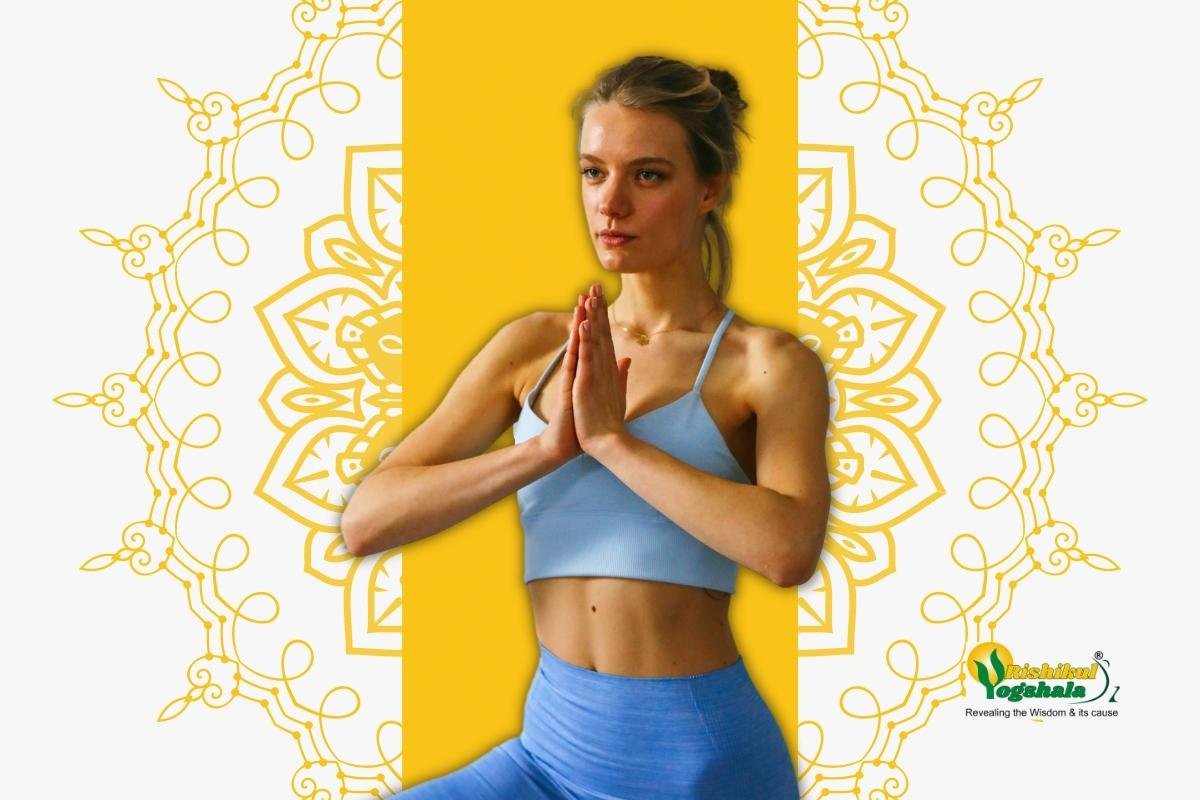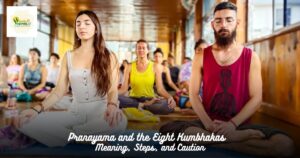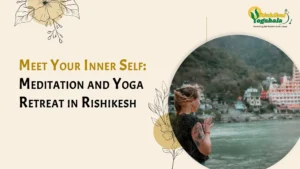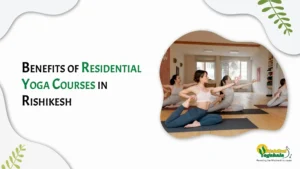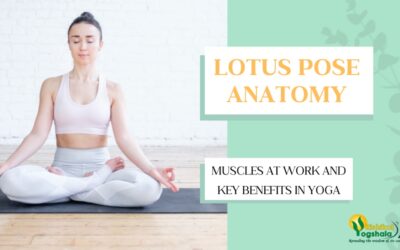Bikram Yoga provides you with several advantages because of the way the movements are combined and performed. By the end of the class, your body’s cells have all received oxygen-rich blood, and you would’ve moved your spine in all the directions that it was intended to travel in to develop your neurological system.
Let’s find out what Bikram yoga poses are and how they benefit us.
Bikram Yoga Poses: What are They?
Bikram Choudhury founded the first “hot yoga” in the 1970s. It is carried out in a 105°F (40°C) chamber with a 40% humidity level.
Every session of Bikram yoga consists of 26 poses and stretches for around 90 minutes. To allow for deeper and more complete expressions of the posture, each position is often maintained for 6 to 60 seconds and repeated twice. Two breathing exercises, or pranayama, are included in the series as well.
Bikram yoga is a popular method for toning muscles, shedding pounds, increasing cardiovascular stamina, and enhancing the mind-body connection. But what are the other benefits of Bikram yoga? Let’s find out.
Bikram Yoga Benefits
Hot yoga or Bikram yoga seeks to promote mental calmness and enhance physical health. The benefits of Bikram yoga include:
- Shedding Calories
- Flexibility
- Bone Health
- Heart Health
- Mental Health
- Skin Health
Now we know that there are substantial benefits of Bikram yoga. But how do you carry out the Bikram yoga 26 poses? Let’s find out in the next section!
Bikram Yoga 26 Poses
Bikram Yoga is sometimes known as the 26+2, which consists of 26 identical poses and 2 breathing techniques. Most positions are executed twice, and depending on the stance, they are often held for 6 to 60 seconds.
The 26 Bikram yoga poses are shown here so you may practice them at home.

1. Pranayama or Standing Deep Breathing
You must inhale gently through your nose for six counts and slowly exhale through your mouth for six counts. Deep inhale and exhale are done to feed the body with oxygen, boost circulation, and enhance attention by utilizing ideal lung capacity.
2. Ardha-Chandrasana with Padahastasana or Half Moon with Hands to Feet Pose
First, the practitioner raises his or her hands aloft with the forefingers pointing up. Upon inhaling, you stretch upward and start to slowly arch into the half-moon position. After that, you circle back to the middle and bend to the opposite side in a “C” form. Next, lean slightly backward while maintaining complete ab and gluteal engagement to maintain the lower back muscles. Finally, you do a deep forward fold to lengthen your hamstrings and relax your spine.
3. Utkatasana or Awkward Pose
This sequence helps you expand your hips, tone your calves, ankles, feet, and shins, and build back and abdominal wall muscles.
4. Garurasana or Eagle Pose
The awkward Pose works the entire lower body; therefore, Eagle (Garudasana) is a logical next pose to twist the lower body and extend the shoulders and chest.
Your shoulders, which likely screamed out in pain after the last position, will now be stretched. Twisting your arms together will stretch not just your shoulders but also the lymph nodes in your armpits by pressing your elbows down as you extend your chest.
5. Dandayamana-Janushirasana or Standing Head to Knee Pose
Standing Head-to-Knee Pose, also known as Dandayamana Janusirsana, is a very difficult balance pose that requires full body involvement.
Moving the weight to one foot, folding the knee at a 90-degree angle, arching the back over the knee while inhaling, and reaching for the foot are the steps in the posture. When your leg is as straight as it can be, carefully extend your foot. Shifting your forward glance down toward the knee is the pose’s last (and possibly most challenging) step.
6. Dandayamana-Dhanurasana or Standing Bow Pose
Standing Bow Pose (Dandayamana-Dhanurasana) employs reaching and pulling to produce resistance in the body, which eventually balances out the opposite directions, to complete the balancing section of the Bikram sequence.
This balance pose widens your shoulders and chest and helps to alter the heart’s blood flow.
7. Tuladandasana or Balancing Stick Pose
The final one-legged balancing position is also called the Balancing Stick. Although it is the simplest posture we perform, it has the potential to be one of the most powerful since it is designed to increase heart rate while maintaining steady, quiet breathing.
8. Dandayamana-Bibhaktapada-Paschimotthanasana or Standing Separate Leg Stretching Pose
As they attempt to reduce their pulse rate with deep, calm breaths, Bikram practitioners are soaked in perspiration till they reach this point in the series.
Legs, spinal muscles, and especially the sciatic nerve are all stretched in this position. Additionally, it helps to boost the functioning of the organs of the abdomen and their functions.
Also Read: Natarajasana (Dancer Pose) – Benefits, How to Practice, and Contraindications
9. Trikonasana or Triangle Pose
Triangle Pose, like Standing Separate Leg Stretching, is very advantageous for hip mobility.
Triangle poses are common in many yoga forms, but this one stands out because it requires strong abdominal muscles to keep your upper body in the right position as you extend up and fight the impulse to rest your hand or elbow on the ground or your knee.
10. Dandayamana-Bibhaktapada-Janushirasana or Standing Separate Leg Head to Knee Pose
Dandayamana Bibhaktapada Janushirasana, also known as Standing Separate Leg Head to Knee Pose, is a rigorous leg stretch that also unlocks the shoulders.
The immune system benefits when the front of the body is compressed and the back is stretched. Additionally, when we tuck our chins to our chests, we provide pressure to the front of the throat, which is helpful for the thyroid and parathyroid glands’ healthy operation.
11. Vrikshasana or Tree Pose
Tree Pose (Vrikshasana), which again places all your weight on one standing leg, improves your balance by externally twisting the raised foot while opening the hip joints.
12. Padangustasana or Toe Stand Pose
Toe Stand, or Padangustasana, is the last pose in the sequence of standing poses. This position increases the range of motion in the knees, ankles, and hips and is crucial for strengthening the feet. Additionally, it improves mental health and concentration.
13. Savasana or Dead Body Pose
You will perform this position between practically every posture in the floor series, at least when we are lying on our backs. Despite the fact that it may not look like a posture, it is one of the most crucial postures we practice. You should remain completely still to ensure that the blood circulates with the least amount of resistance possible. You should also try to unwind and slow your breathing.
14. Pavanamuktasana or Wind-Removing Pose
Spend a moment in Wind Removing Pose (Pavanamuktasana) to widen your hips before beginning the sitting series. By gently stretching, this position helps to relieve lower back discomfort. This posture also strengthens the core and makes the hips more flexible.
Sit-up Pose
The sit-up transition pose denotes entering the series of horizontal postures, including lying on your stomach. Sit-ups need a certain kind of quick double exhalation via the lips as you raise yourself from a supine posture, tighten your abdominals, and fold forward over the front legs.
15. Bhujangasana or Cobra Pose
Even Bikram practitioner enjoys a nice Cobra Pose, also known as Bhujangasana. This position helps to reduce back strain and is excellent for stretching and core strengthening.
16. Salabhasana or Locust Pose
One of the most misinterpreted poses in the Bikram sequence is the locust pose (Salabhasana), which calls for vigorous pressing on the floor with your arms, chest, and mouth while simultaneously bringing your legs up behind you.
17. Poorna-Salabhasana or Full Locust Pose
The third exercise in the series for building the back is designed to put pressure on the center of the spine. The more effectively you can maintain your arms and legs straight and your muscles engaged, similar to the posture before, the easier it will be for you to get your back muscles to tighten and soar into the air!
Also Read: Vakrasana or Half Spinal Twist Pose : Benefits & How to Practice
18. Dhanurasana or Bow Pose
Bow Pose, also known as Dhanurasana, continues the back-bending sequence and is excellent for opening the shoulders and chest. This position is stimulating and improves spinal flexibility.
19. Supta-Vajrasana or Fixed Firm Pose
Supta Vajrasana, also known as Fixed Firm Pose, is more difficult than it appears since it calls for extreme knee mobility, hip mobility, and diaphragm stretching.
20. Ardha-Kurmasana or Half Tortoise Pose
A fantastic, unwinding asana in Bikram yoga is Half Tortoise (Ardha Kurmasana). While gently extending the hips in this position, find relief in the shoulders and neck.
21. Ustrasana or Camel Pose
The final and most intense backbend we perform in class is referred to as “the healer of the spine.” In this position, we want to evenly bend the spine backwards, not simply the sections that are naturally inclined to do so, such as the neck or the lower back. Instead, you attempt to widen the spaces between each vertebra before doing a backbend.
22. Sasangasana or Rabbit Pose
In contrast to Camel Pose’s strong back opening, Rabbit Pose relaxes the spine as you circle and compress forward. In order to round your back upward and massage your abdominal organs, place your forehead on your knees and place the top of your head on the floor.
23. Janushirasana met Paschimotthanasana or Head to Knee with Stretching Pose
Before finishing the second set of both, these positions are performed consecutively, one after the other. Similar to what you just performed in the Rabbit pose, when you do the right side and left side of the separated leg, head to knee, you are again producing a deep forward bending compression. Although you do it with your leg extended, which is a fantastic hip opener, the rounding of the spine is what draws attention to your posture.
Also Read: Prasarita Padottanasana: Benefits, Modifications and Variations
24. Ardha-Matsyendrasana or Spine Twisting Pose
This final position in the series adjusts your spine in a chiropractic manner. It is a terrific hip opener, and when you extend as high as you can and rotate, the front of your abdomen gets a lovely compression and stretch.
25. Kapalbhati in Vajrasana or Blowing in Firm
The concluding pranayam of Bikram is the famous Kapalabhati breathing. You may finish the detoxification process and release any remaining tension by taking a cleansing breath.
26. Savasana or Dead Body Pose
This is the final exercise you complete in class and is crucial to reaping the rewards of your yoga practice. It is the same as the backbend you perform in between-the-floor series poses. Your closed eyes are the difference, though. Allow yourself at least two minutes in this posture to completely unwind and, if you can, to let your breathing and pulse rate drop.

Conclusion
Not everyone may be a fan of hot yoga. But if you like normal yoga and want to take it to the next level, it can be precisely what you need. There are many different advantages to hot yoga for your body and mind. It can aid in calorie burning, bone density growth, cardiovascular fitness improvement, and flexibility enhancement. Additionally, it could lessen stress and reduce anxiety.
At Rishikul Yogshala Rishikesh, we offer a range of yoga teacher training programs to support your growth. Whether you start with our 200 Hour Yoga TTC in Rishikesh, deepen your practice with our 300 Hour Yoga Teacher Training in Rishikesh. Join us to refine your skills and further your yoga journey.
Bikram Yoga Poses – FAQs
1) How long do you hold poses in Bikram?
Based on your expertise with the pose and your present fitness level, each Bikram yoga pose is retained for 10 to 60 seconds. To align your skeletal system naturally, the positions work your muscles.
2) How many Bikram yoga poses are there?
Bikram yoga is a set of 26 yoga asanas plus two pranayama exercises.
3) Is Bikram yoga actually good for you?
In healthy individuals, Bikram yoga has been demonstrated to enhance balance, lower and upper body range of motion, and lower body strength.
Last Modified Date: 23 September 2025

